Country Indonesia Type Army Founder Sukarno | Size 300,000 | |
Active 15 December 1945 – present Role Land warfareTo uphold state sovereignty and defend the territorial integrity of the Republic of Indonesia Similar Profiles | ||
The Indonesian Army (Indonesian: Tentara Nasional Indonesia-Angkatan Darat, TNI–AD), the land component of the Indonesian National Armed Forces, has an estimated strength of 300,000 active personnel. The history of the Indonesian Army has its roots in 1945 when the Tentara Keamanan Rakyat (TKR) "Civil Security Forces" first emerged as a paramilitary and police corps.
Contents
- Formation
- Action against rebellions
- 1960 onwards
- Organisation
- Territorial Commands
- Rank
- Combat element
- Combat support element
- Support elements
- Special Forces
- Air unit
- Combat Reserve Units
- Administrative Assistance Unit
- References
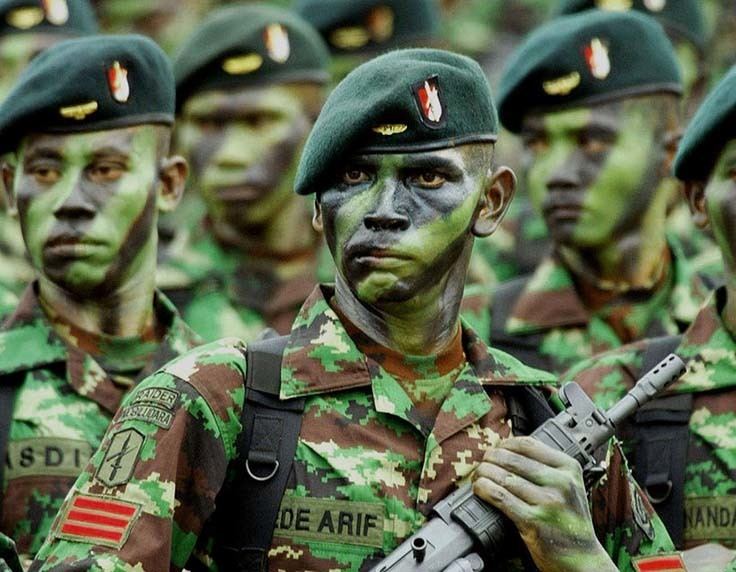
Since the nation's independence movement, the Indonesian Army has been involved in multifaceted operations ranging from the incorporation of Western New Guinea, the Indonesia-Malaysia Confrontation, to the annexation of East Timor, as well as internal counter-insurgency operations in Aceh, Maluku, and Papua.
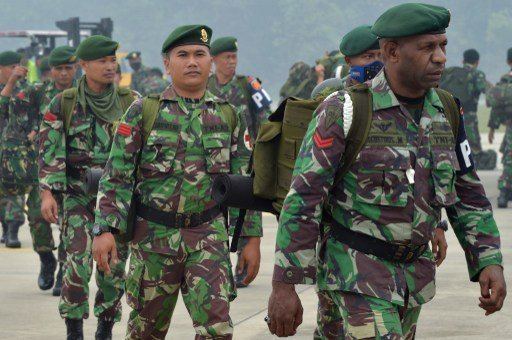
The Indonesia Army is composed of a headquarters, 12 military area commands, a strategic reserve command KOSTRAD, a special forces command Kopassus, and various adjunct units.
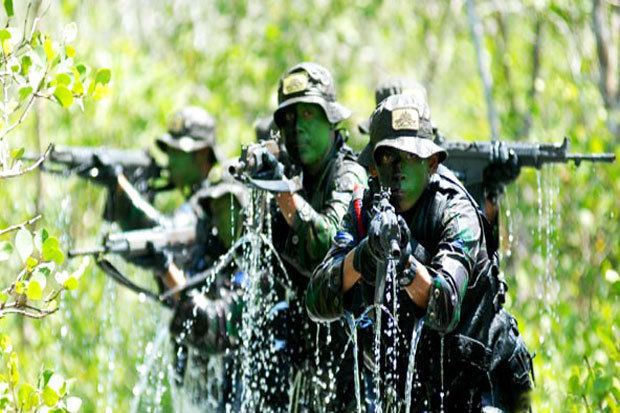
Formation
In the week following the Japanese surrender of 1945, the Giyugun (PETA) and Heiho groups were disbanded by the Japanese. Most PETA and Heiho members did not yet know about the declaration of independence. Command structures and membership vital for a national army were consequently dismantled. Thus, rather than being formed from a trained, armed, and organised army, the Republican armed forces began to grow in September from usually younger, less trained groups built around charismatic leaders. Creating a rational military structure that was obedient to central authority from such disorganisation, was one of the major problems of the revolution, a problem that remains through to contemporary times. In the self-created Indonesian army, Japanese-trained Indonesian officers prevailed over those trained by the Dutch. A thirty-year-old former school teacher, Sudirman, was elected 'commander-in-chief' at the first meeting of Division Commanders in Yogyakarta on 12 November 1945.
At critical moments during the revolution, the military managed to manifest itself as a people's army, the army of the revolution, and the national army. As the power of the newborn, in addition to arranging the TNI itself, at the same time must also face various challenges, both from within and from abroad. From within the country, the military face-undermining undermining both a political dimension as well as military dimensions. Political undermining sourced from the communist groups who want to put the military under their influence through political officers, the Bureau of Struggle, and TNI community. While the challenges of domestic military dimension, namely the military face of armed upheaval in some areas and the PKI rebellion in Madiun and Darul Islam (DI) in West Java that could threaten national integrity. Challenges from abroad, namely TNI twice face the Dutch military aggression that had a more advanced weaponry.
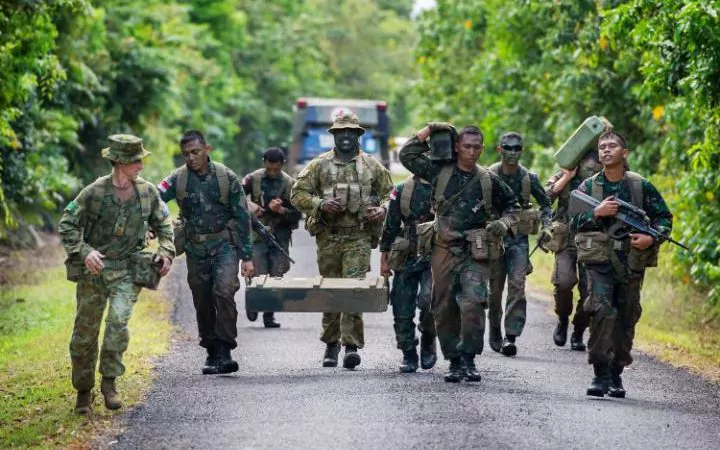
Aware of the limitations of the military in the face of the Dutch aggression, the people of Indonesia to implement the People's War in which all the power of the TNI and the community and resources were deployed to confront the Dutch aggression. Thus, the integrity and existence of the Unitary Republic of Indonesia has been able to be maintained by military force with the people. In accordance with the decision of the Round Table Conference (RTC), at the end of 1949 formed the United States of Indonesia (RIS). Correspondingly, also formed the Angkatan Perang Republik Indonesia Serikat (APRIS) which is combined with the TNI and the former KNIL as its core. In August 1950 RIS was disbanded and returned to form unitary State. APRIS was renamed to Angkatan Perang Republik Indonesia (APRI).
Action against rebellions
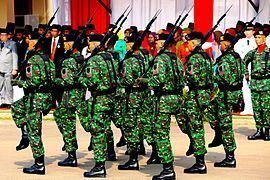
The period is also called the period of liberal democracy is characterized by various rebellions in the country. In 1950 most of the former members of the Colonial Army launched an uprising in Bandung which is known as the Legion of Ratu Adil / APRA uprising and was led by former KNIL officer Raymond Westerling. The army also need to confront the uprising in Makassar led by Andi Azis and the Republic of South Maluku (RMS) in Maluku. Meanwhile, DaruI Tslam in West Java widen its influence to South Kalimantan, South Sulawesi and Aceh. In 1958 the Revolutionary Government of the Republic of Indonesia / People's Struggle (PRRI / Permesta) started arebellion in large parts of Sumatra and North Sulawesi endangering the national integrity. All of the rebellion were crushed by the military along with the strength of other national components.
On 17 November 1952, General Nasution is suspended as army chief of staff following army indiscipline over command and support that threatens the government. From the 1950s, the military articulated the doctrines of dwifungsi and hankamrata, a military roles in the country's socio-political development as well as security; and a requirement that the resources of the people be at the call of the armed forces. On 5 July 1959, Sukarno, with armed forces support, issued a decree dissolving the Constituent Assembly and reintroducing the Constitution of 1945 with strong presidential powers. He assumed the additional role of Prime Minister, which completes the structure of 'Guided Democracy'.
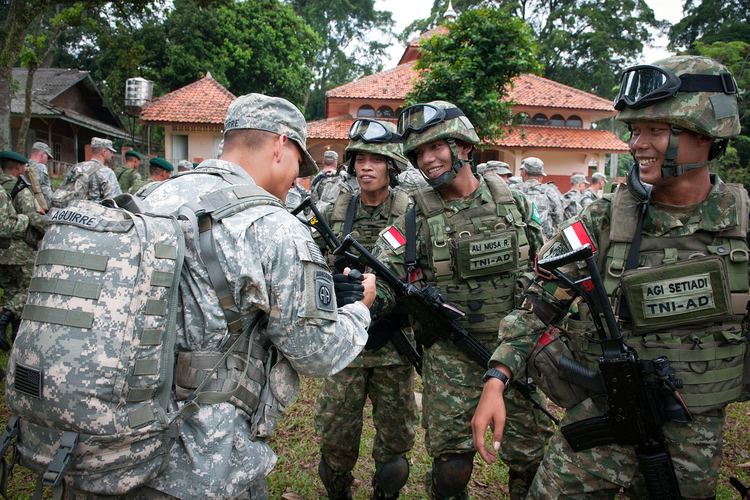
At the same time, the Indonesian government started sending their troops on UN peacekeeping mission. The first batch of soldiers were sent to Sinai, Egypt and were known as Garuda Contingent 1. Garuda Contingent I sent on January 8, 1957 to Egypt. Garuda Contingent I consists of the combined personnel of the 15th Army Infantry Regiment Territorium (TT) IV / Diponegoro, as well as one company of the 18th Infantry Regiment TT V / Brawijaya in Malang. This contingent was led by Lt. Col. Infantry Hartoyo which was later replaced by Lieutenant Colonel Infantry Suadi Suromihardjo, while his deputy Major of Infantry Soediono Suryantoro. The contingent departed on January 8, 1957 with the aircraft Douglas C-124 Globemaster II of the United States Air Force for Beirut, the Lebanese capital. From Beirut the contingent was divided by two, the majority heading to Abu Suweir and partly to Al Sandhira. Furthermore, El Sandhira troops moved into Gaza, the border area of Egypt and Israel, while the command is in Rafah. This contingent returned to Indonesia in September 29, 1957.Garuda Contingent I had a total number of 559 troops personnel.
1960 onwards
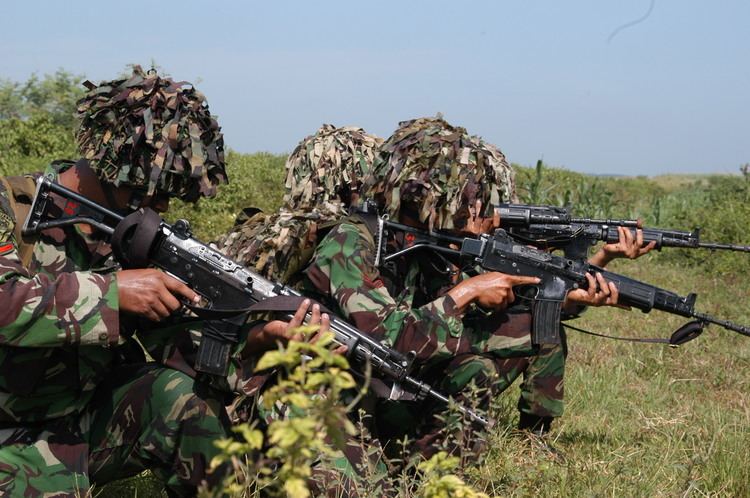
The army was heavily involved in the Indonesian killings of 1965–1966. The killings were an anti-communist purge following a failed coup of the 30 September Movement. The most widely accepted estimates are that more than 500,000 people were killed. The purge was a pivotal event in the transition to the "New Order"; the Indonesian Communist Party (PKI) was eliminated as a political force. The failed coup released pent-up communal hatreds which were fanned by the Indonesian Army, which quickly blamed the PKI. Communists were purged from political, social, and military life, and the PKI itself was banned. The massacres began in October 1965, in the weeks following the coup attempt, and reached their peak over the remainder of the year before subsiding in the early months of 1966. They started in the capital, Jakarta, and spread to Central and East Java and, later, Bali. Thousands of local vigilantes and army units killed actual and alleged PKI members. Although killings occurred across Indonesia, the worst were in the PKI strongholds of Central Java, East Java, Bali, and northern Sumatra. It is possible that over one million people were imprisoned at one time or another.
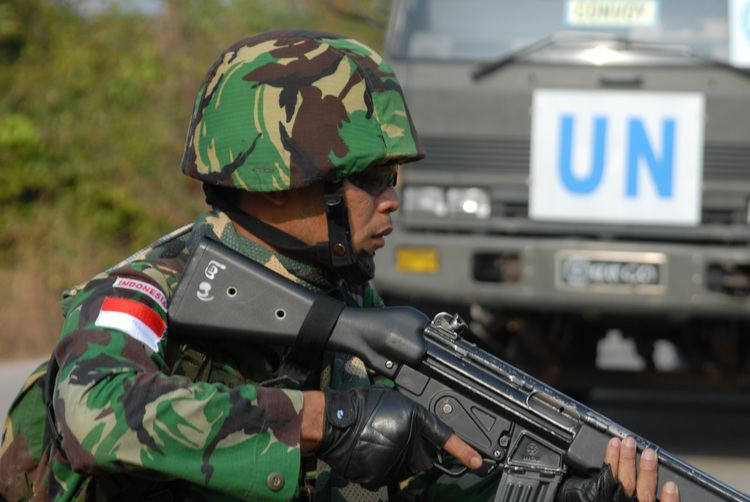
Sukarno's balancing act of "Nasakom" (nationalism, religion and communism) had been unravelled. His most significant pillar of support, the PKI, had been effectively eliminated by the other two pillars—the army and political Islam; and the army was on the way to unchallenged power. In March 1968, Suharto was formally elected president.
The killings are skipped over in most Indonesian history books and have received little introspection by Indonesians and comparatively little international attention. Satisfactory explanations for the scale and frenzy of the violence have challenged scholars from all ideological perspectives. The possibility of a return to similar upheavals is cited as a factor in the "New Order" administration's political conservatism and tight control of the political system. Vigilance against a perceived communist threat remained a hallmark of Suharto's thirty-year presidency. The CIA described the massacre as "one of the worst mass murders of the 20th century, along with the Soviet purges of the 1930s, the Nazi mass murders during the Second World War, and the Maoist bloodbath of the early 1950s."
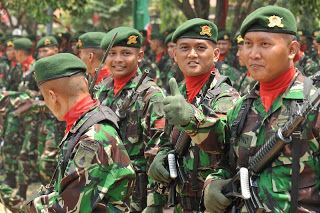
Later army operations have not been without controversy; it has been periodically associated with human rights violations, particularly in West Papua, East Timor and Aceh.

The size of the Army has expanded over the years; in July 1976 the Army was estimated to consist of solely 180,000 personnel, one armoured cavalry brigade, part of Kostrad (one tank battalion, plus support units), 14 infantry brigades (90 infantry, 1 para, 9 artillery, 11 anti-aircraft, and 9 engineer battalions) of which three of the brigades were in Kostrad, two airborne brigades totalling six battalions, also part of Kostrad, one independent tank battalion, 7 independent armoured cavalry battalions, and four independent para-commando battalions.
Organisation

The Indonesian Army is currently organized into 15 military area commands which are spread throughout the Indonesian archipelago. They are placed under the jurisdiction of the army headquarter. Three are based in Sumatra, four are based in Java, two are based in Kalimantan, one based in Lesser Sunda Islands, two based in Sulawesi, one based in Maluku and two based in Papua. The Komando Cadangan Strategis Angkatan Darat (reserve forces), Komando Pasukan Khusus (special forces) and the Pusat Penerbangan Angkatan Darat (army aviation) are independent formations and directly subordinate to the Chief of Staff. The army headquarters is under coordination with the armed force Headquarters. The most high-ranking officer within the army is the Chief of Staff which has the rank of a four-star General and served under the Commander of the Armed Forces.
Territorial Commands
The Armed Forces' Military districts known as "Kodam"s operational sections were established by General Soedirman, following the model of the German Wehrkreise system. The system was later codified in Surat Perintah Siasat No.1, signed into doctrine by General Soedirman in November 1948.
The Army's structure underwent various reorganisations throughout its early years. From 1946 to 1952, the Army was organised into set divisions. These were further consolidated in 1951, and then dispersed in 1952. From 1952 to 1958-59, the Army was organised into seven Tentara & Teritoriums. In August 1958, the Indonesian Army reconsolidated its territorial command. There were then established sixteen Kodams, which retained earlier divisional titles; the Siliwangi Division, for example, became Kodam VI/Siliwangi.
A reorganisation in 1985 made significant changes in the army chain of command. The four multiservice Regional Defence Commands (Kowilhans) and the National Strategic Command (Kostranas) were eliminated from the defence structure, re-establishing the Military Area Command (Kodam), or regional command, as the key organisation for strategic, tactical, and territorial operations for all services. The chain of command flowed directly from the ABRI commander in chief to the ten Kodam commanders, and then to subordinate army territorial commands.
The Kodams incorporate provincial and district commands each with a number of infantry battalions, sometimes a cavalry battalion, artillery, or engineers. Some have Raider battalions attached. Currently there are 15 Military districts command in Indonesia:
Rank
In the army, as well as in other armed forces branches in Indonesia, the rank consists of officer known as in Bahasa Indonesian: "Perwira", NCO ("Bintara") and enlisted ("Tamtama"). The highest rank in the Army is the Great General (Jenderal Besar) five stars. Until now there are only 3 officer of the Army who was awarded this rank. They are:
Combat element
The elite infantry battalions of the Indonesian Army are called "Raider", and 1 Raider Battalion is equal to 3 regular infantry battalions combined. There are 37 raider battalions in the Indonesian Army Infantry element. The Infantry of the Indonesian Army comprises of different originating units within the combat organisation, there are several infantry battalions part of Kostrad and there are infantry battalions part of the regular army combat units which are not part of Kostrad. There are "Raider" battalions part of Kostrad and are non-Kostrad. There are 3 Airborne infantry brigades in the Indonesian Army with some of them include the specialty of "Raider" (called: Para-raider) capabilities and are all part of the Kostrad corps. Infantry beret colors are as shown below:
There are 5 types of Infantry in the Indonesian Army, which are:
- Para-Raider Infantry Battalion ("Yonif Para Raider"): ability in airborne and raid warfare.
- Airborne Infantry Battalion ("Yonif Linud"): ability in airborne warfare. (Now, mostly Airborne Infantry Battalions are trained "Raider" capabilities and are categorized as: "Para-Raider")
- Raider Infantry Battalion ("Yonif Raider"): ability in raid warfare.
- Mechanized Infantry Battalion ("Yonif Mekanis"): mobilized infantry.
- Regular Infantry Battalion ("Yonif"): ability in normal foot-warfare combat.
All infantrymen of the Indonesian Army have capabilities in basic Jungle warfare.
